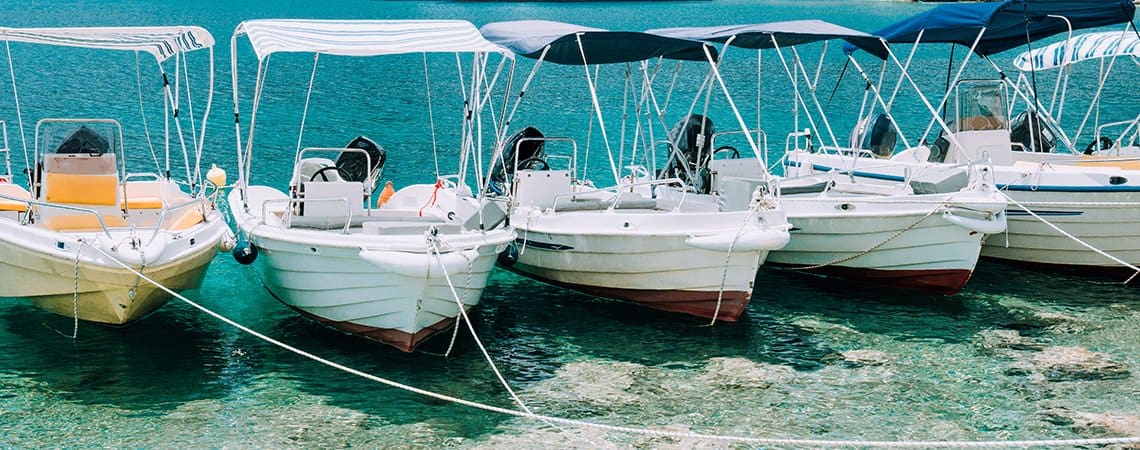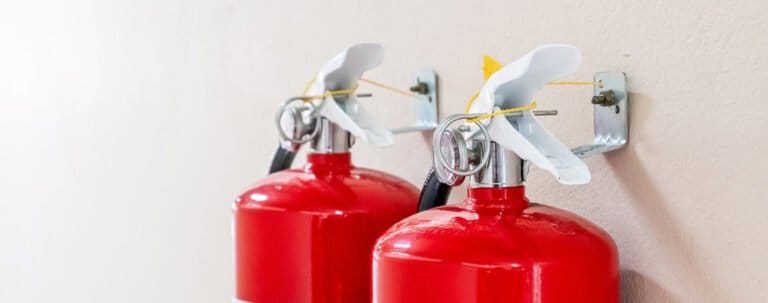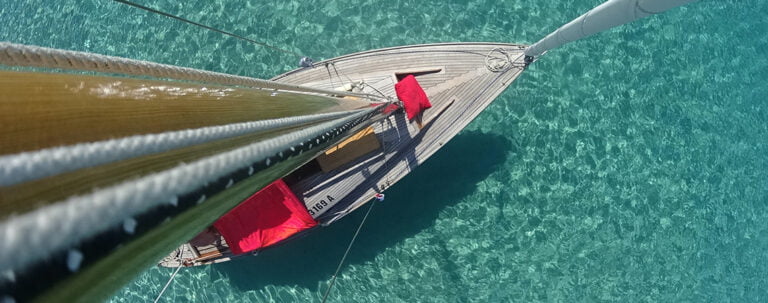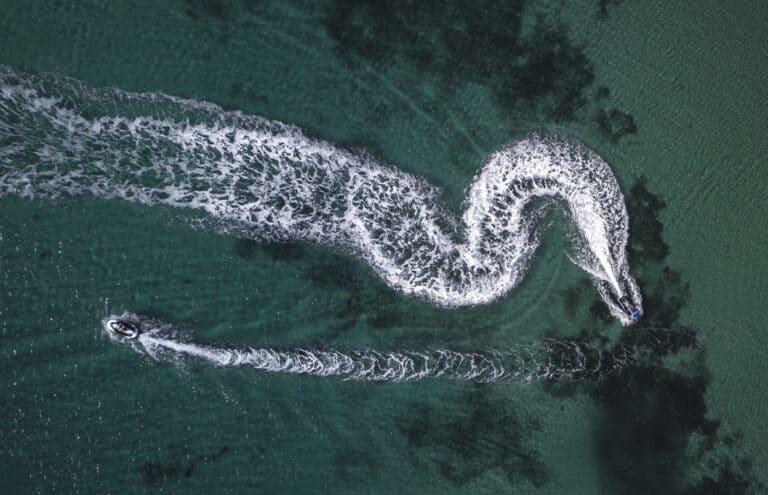If you are new to anchors, then you may be wondering – how do most anchors hold a recreational boat in place?
Well, traditional anchors work by digging into the seabed, yet not too deep, otherwise you risk to lose an anchor and a significant piece of chain. Once the anchor reaches the bottom, then you send down tens of meters on chain, as your boat floats on the water. Basically anchor and chain together hold the boat by their weight.
This is how most anchors work, but some designs may deviate from this procedure slightly, like stationary anchors holding buoys or small anchors for a rubber dinghy usually do not use a chain. Besides, different anchors have varying holding power depending on their design.
Below, we’ll have a look at common anchor styles and discuss which is the best for recreational boaters. In this article, we’ll also cover some practical anchoring considerations for boaters.
- How Do Anchors Hold a Boat in Place?
- Types of Anchors and How They Work
- What Anchor is a Good Choice for Most Recreational Boats?
- Does an Anchor have to Touch the Bottom?
- What Happens if an Anchor Gets Stuck?
- Do All Ships have Anchors?
- Do Ships Drop Anchor in Storm?
- How Do Most Anchors Hold a Recreational Boat in Place – Final Words
How Do Anchors Hold a Boat in Place?
So as already established, anchors generally hold vessels in place lying on the seabed where the chain adds even more weight. However, this is just part of the answer – there are some other aspects to this too.
How Much Of Chain Should I Send Down When Anchoring
For example, you anchor at 10 meters depth, then you send down about 40 meters of chain, so that about 20-30 meters of chain adding its weight will help anchor to hold the ship.
There are other aspects, however. Imagine that in our example your boat shall be moving around the point where the anchor lies with the radius of 20-30 meters, once the wind changes. Then you mind if there are other boats around, sometimes you need a second anchor, sometimes you need to reduce the chain.
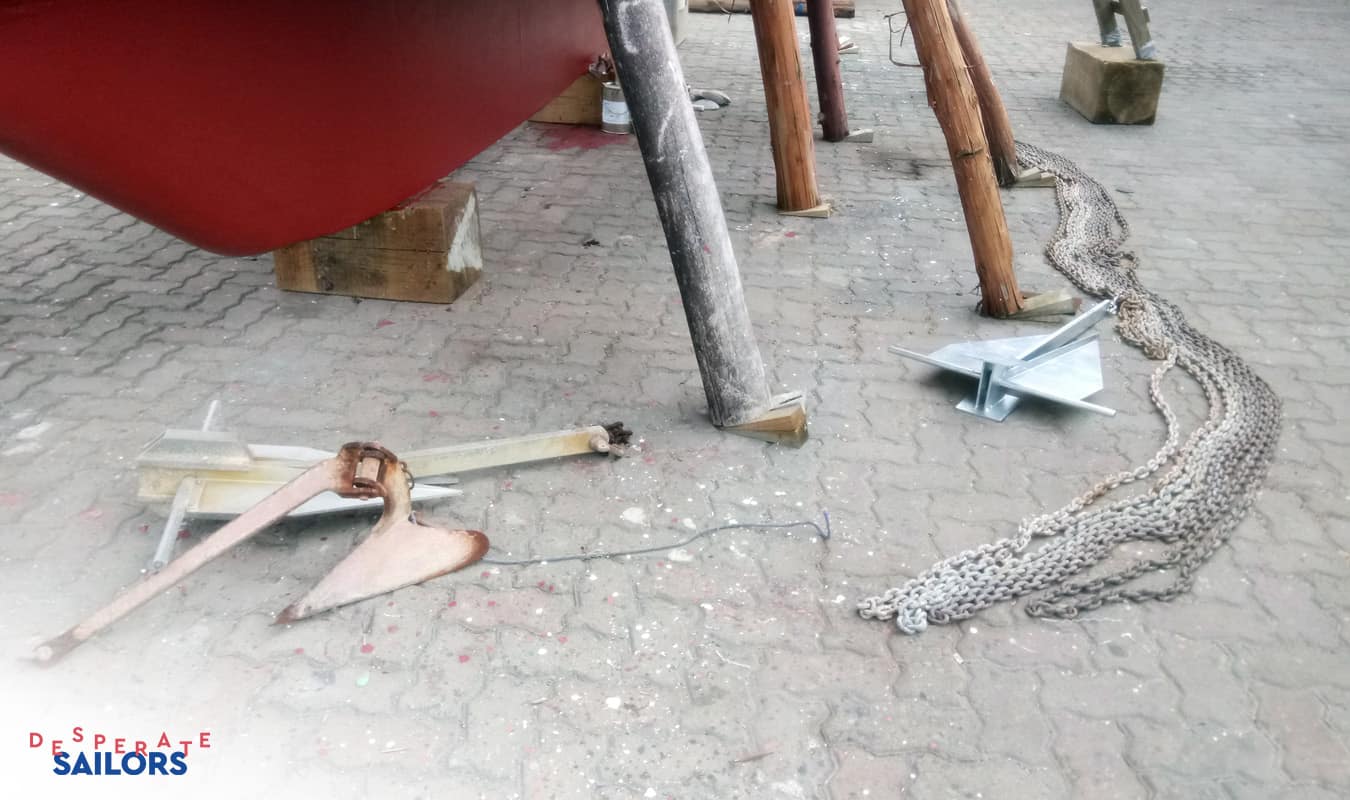
What Depth Should I Choose To Anchor
The classic advice is about 10 meters, for an overnight stay, yet it’s not too strict. There are other conditions, sometimes you feel well at 3-5 meter depth, depending how flat is the seabed, where’s the wind comes from, what’s the forecast, etc.
You can choose the anchoring place just looking at the chart, but a good idea also to ask other skippers who know the area well, and may advise where you anchor safely.
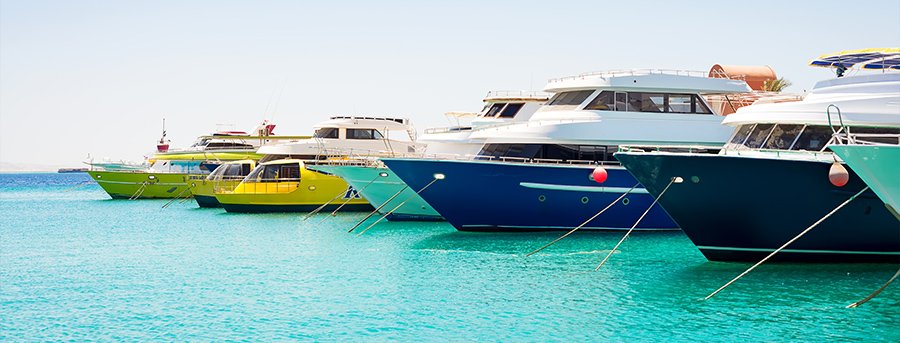
The Weight Of The Anchor Matters
The weight of the anchor matters – for a heavier boat the bigger anchor you want. While the shape of the anchor is responsible how good it may fit for a seabed. Some anchors are relatively “universal”, but you choose the seabed where you anchor carefully or you risk the anchor gets stuck down there in the bottom.
In fact, the earliest anchors were just weight – sandbags or baskets filled with stones. These anchors held the boat with their weight and friction along the bottom. With that said, weight and friction alone can only do so much, especially with large and heavy vessels.
The archaic sandbags and rocks soon evolved into fluked anchors. These anchors are iconic and are the most recognizable among all anchor types.
The fluke anchor has been used for thousands of years. The Romans, for example, used it already in the 1st century AD, while they never accounted to be good sailors, but they learnt many practices from Phoenicia, the most thalassocratic nation of the Ancient Mediterranean, and from the Greek of course.
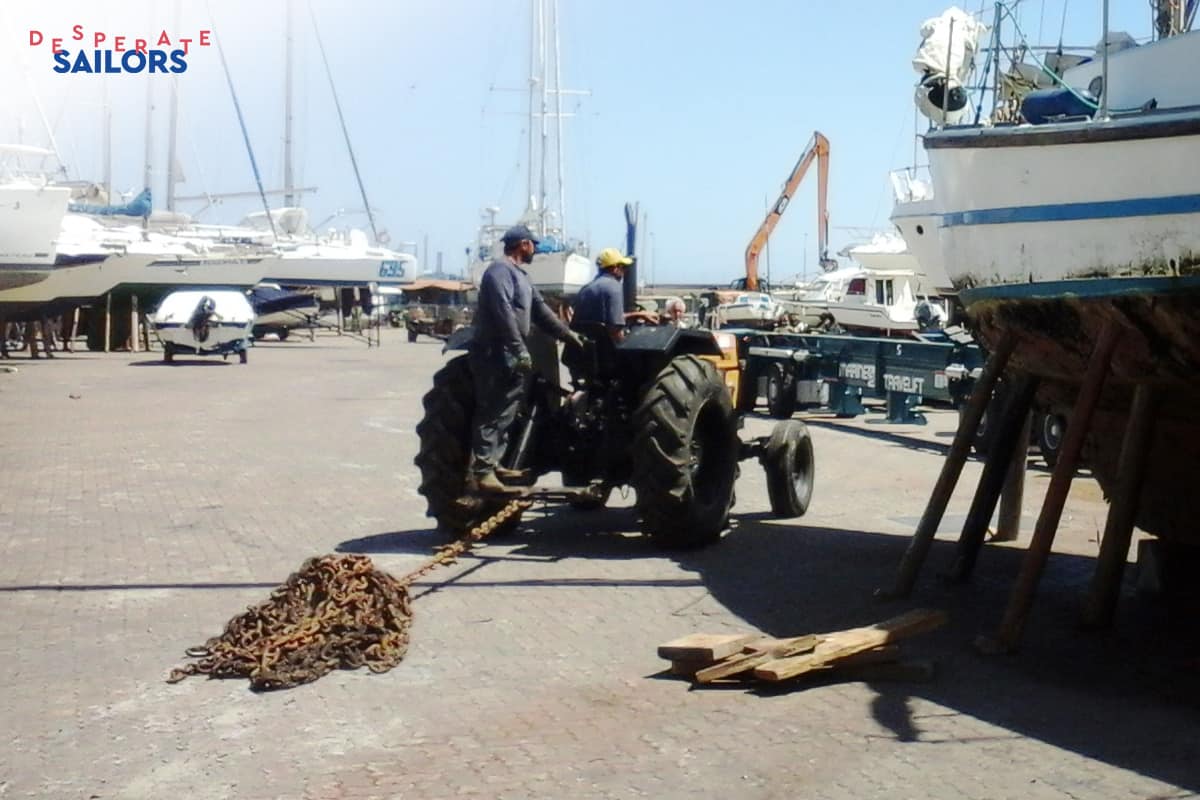
Types of Anchors and How They Work
Although the fluke-style anchor is the most recognizable and popular, it’s not the only type of anchor used today.
Over the centuries, plenty of other designs have been introduced. Although they all work in more or less the same way, they have distinct designs that make them suitable for different situations.
Fluke-Style Anchor
So, how does a fluke-style anchor hold a recreational boat in place? As a recap, fluke-style anchors work like this.
After the anchor reaches the seabed, it burrows into it. As your recreational boat drifts away from the anchoring point due to wind or water, the anchor gets buried even deeper into the ground.
Fluke-style anchors work really well when the seabed is composed of sand or gravel, but it’s not ideal in absolutely every case. This is where other styles of anchors come in.
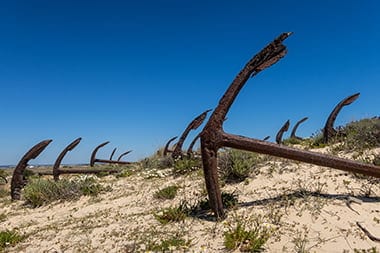
Grapnel Anchors
A grapnel anchor consists of a shank with typically four tines, though some grapnel anchors have more.
Most commonly, grapnel anchors are used when the bottom is rocky. No matter how the anchor reaches the seabed, it can quickly hook onto bottom structure.
Although grapnel anchors are best for rocky bottoms, they also have some disadvantages, including their large size and the high risk of getting entangled in the rode.
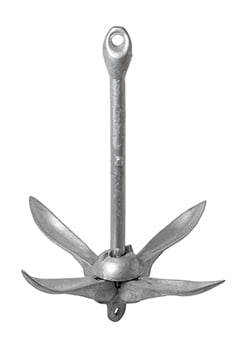
Plough Anchors
Plough anchors are similar to ploughs (plows), hence their name. They are fairly effective with any seabed and therefore are highly popular among boat owners. With that said, plough anchors do not excel anywhere, so they aren’t the best if you want the very best hold in a particular situation.
Plough anchors have one flaw – they tend to break out of the seabed. Agricultural plows also like to escape the ground, so the two designs are sharing this downside.
Danforth Anchor
The Danforth anchor features triangular flukes attached to a hinged stock. This anchor style is also designed to be burrowed into the seabed, but thanks to its flat and compact design, it’s easier to retrieve than traditional fluke-style anchors.
With that said, Danforth anchors typically do not hold in gravel or weeds. Besides, if the boat is moving when dropping the anchor or if there is current, the anchor may just float over the bottom because the large flukes act as a sail.
Still, Danforth anchors are reliable and highly popular among recreational boaters.
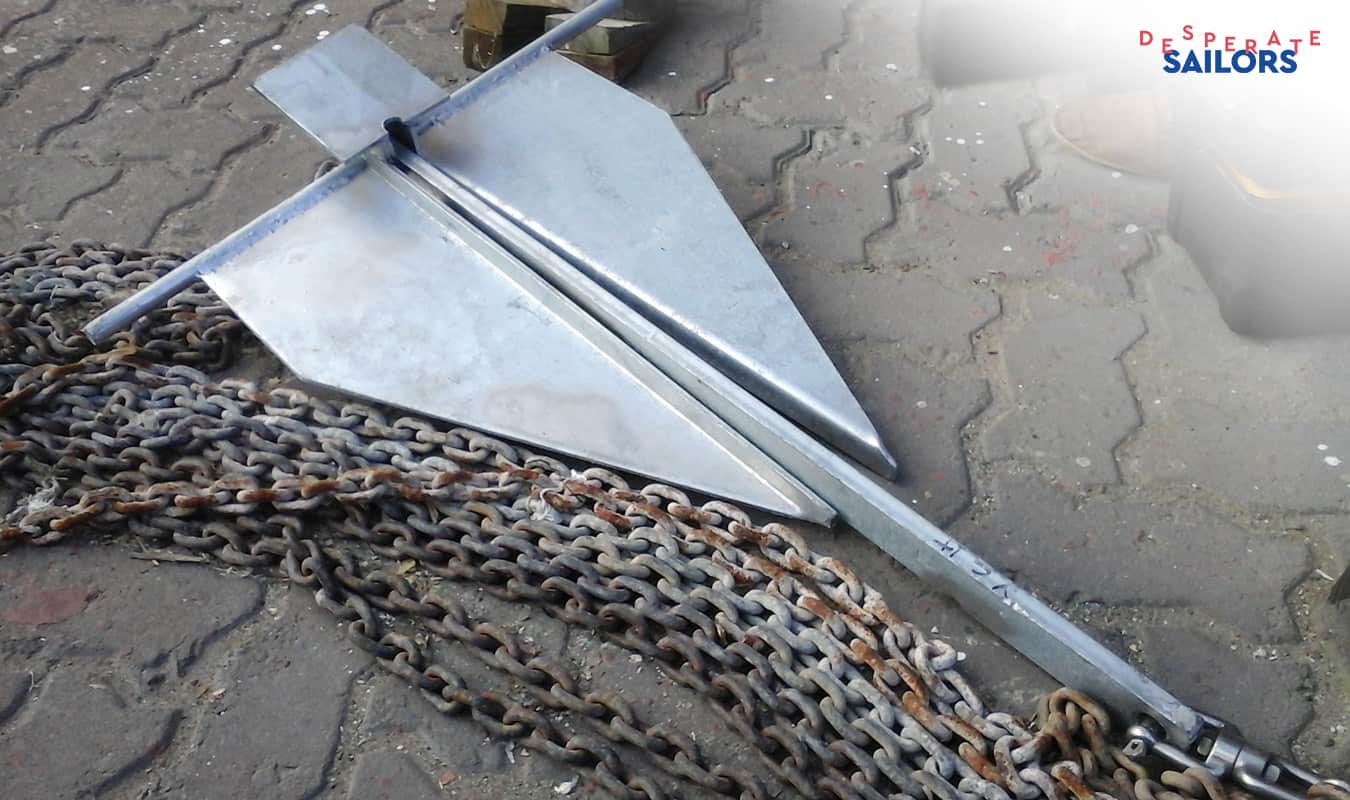
Bruce Claw Anchors
The Bruce claw anchor was introduced in the 1970s by Peter Bruce. This anchor design has been intended to address the downsides of the plough anchor. As a result, Bruce anchors aka Claw anchors do not break out of the bottom easily, though they set relatively slowly.
Claw anchors are fairly effective on small boats, but they get especially effective when large. Relative to their weight, Bruce claw anchors offer low holding power, meaning that they need to be oversized to reach the performance of competing designs.
Bruce anchors don’t penetrate weedy bottoms and grass, but they work fairly well in boulder bottoms.
Mushroom-Style Anchors
Mushroom-style anchors work by sinking into seabed sediment. They are called “mushroom” because of their distinct shape.
Mushroom anchors have low holding power and thus should only be used on small boats. They offer very poor performance in rough weather and water as well.
Auger Anchors
Auger anchors are intended to be screwed into the seabed or beach sand. Typically, auger anchors are used for permanent anchoring, but they may also be used for anchoring to the beach.
Auger-style anchors have very high holding power, but they can be very difficult to set in deep water.
What Anchor is a Good Choice for Most Recreational Boats?
The following three types of anchors are most commonly used in recreational boats:
These are compact, have adequate holding power for small boats, and are reasonably effective when used in the right situation.
Does an Anchor have to Touch the Bottom?
Traditional anchors need to dig into the seabed to do their job. However, does an anchor need to always touch the seabed to work? Wouldn’t the weight of an anchor be sufficient?
Well, there are two cases here:
- Your anchor can reach the seabed.
- Your anchor cannot reach the seabed because it’s too deep.
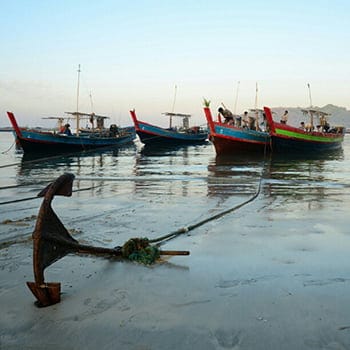
If your anchor can reach the bottom, then you are most likely close to land. In this case, the anchor does have to anchor to the bottom to prevent your vessel from drifting away and hitting another boat or the land. The weight alone probably isn’t going to be sufficient to keep your boat stable.
How about deep waters – especially oceanic waters – where anchors cannot physically reach the seabed?
Well, seas and oceans are a bit special due to two reasons:
- You don’t really need to anchor in open waters since the risk of hitting another vessel or land is very low.
- Ships rarely anchor when out at the sea. Vessels don’t usually stop until they reach their destination.
When ships do need to anchor in the sea or ocean, they use sea anchors (also called drift anchors). Sea anchors are shaped like parachutes and are designed to slow a vessel down by creating drag.
Drift anchors may be used on boats of any size. They may be used anywhere as well, but they shouldn’t be used when you are close to land. If you are close to land, then you should anchor in the traditional way.
What Happens if an Anchor Gets Stuck?
Now that you know how anchors hold a recreational boat in place, you may be wondering – what if an anchor gets stuck?
Well, what to do if your anchor does get stuck in the bottom depends on the circumstances. For some perspective, here’s what you may do:
- The most popular way of freeing a stuck anchor is tying the anchor rode to a cleat and driving the boat in different directions in hopes that the anchor will un-wedge itself. This is a simple method that works in some cases.
- You may attempt to just lift the anchor – the flukes may be able to break free from the bottom. This won’t work if the anchor has been caught by boulders.
- You may dive down to the anchor and attempt to free it manually. This is a reasonable option for small boats, but it generally doesn’t work with larger ships – mainly because their anchors are super-heavy.
- If nothing works, then you should just cut the rode and abandon the anchor. But note that you’ll have to buy a new rode and anchor.
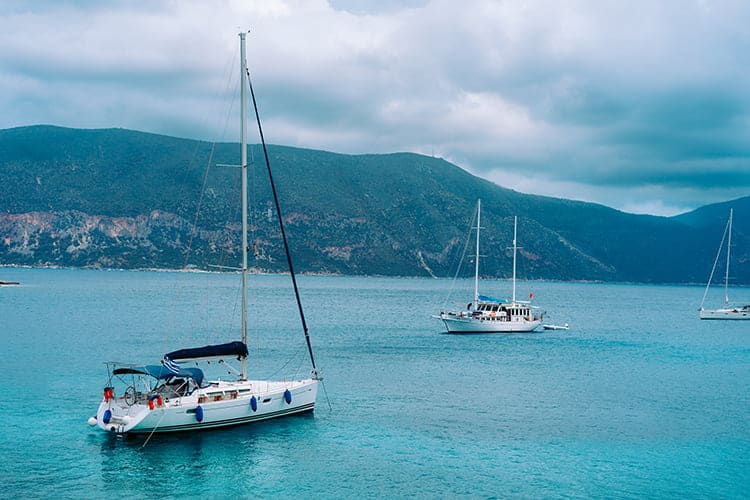
Do All Ships have Anchors?
Even though modern vessels may rely on thrusters to maintain position for a short stay, I seriously doubt if it is even legal to go out without an anchor for a cruising boat. Yes, all boats have anchors.
Besides, thrusters require fuel and energy to operate, add noise. They have also the advantages – they don’t damage the seabed and have no risk of getting stuck.
Do Ships Drop Anchor in Storm?
This mainly depends on where the ship is. But you’d better be very confident about the anchorage bay you choose to hide from the storm. Many sailors advise apparently going away from shore when it’s storming is the safest solution.
Near land, the captain may attempt to anchor to avoid crashing into the shore. But in deep waters where the anchor may not reach the bottom, a more reasonable course of action may be to just ride the storm out.
How Do Most Anchors Hold a Recreational Boat in Place – Final Words
So how do most anchors hold a recreational boat in place? Anchors burrow into the ground, holding by their weight and the weight of the chain you send down, therefore the whole “system” prevents your boat from drifting away.
TIP Some people lose boats when leaving them anchored, do not underestimate the importance to anchor properly.
For recreational boats, an anchor is a must-have. You probably won’t be cruising away from the shore, so whenever you need to stop, just use an anchor to avoid crashing into someone or something.
Thanks for reading, and we encourage you to visit our blog.
References
- Naval Encyclopedia – Roman Ships
- ASA – An Anchor Called Bruce
